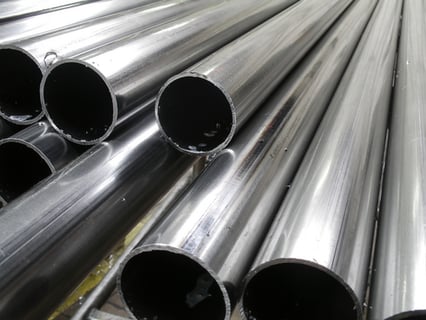 Purchasers of finished tube and pipe are increasingly demanding just-in-time (JIT) delivery to reduce their inventory levels. They don’t want their cash tied up in inventory sitting in costly warehouse space.
Purchasers of finished tube and pipe are increasingly demanding just-in-time (JIT) delivery to reduce their inventory levels. They don’t want their cash tied up in inventory sitting in costly warehouse space.
The result of this supply-chain trend is that many tube and pipe mills must produce product on demand with short delivery-time requirements— necessitating frequent mill changeovers.
This is a concern for tube and pipe mills because every mill changeover takes time and produces scrap as part of the set-up and dial-in process.
Minimizing the Cost of Changeovers
If you’re faced with the problem of too many changeovers because of the demands of JIT, there are three steps you can take to reduce the negative impact.
1. Schedule similar products or product diameters in groups to reduce the frequency of roll and roll-stand changes.
Changing out rolls and roll stands results in substantial downtime while threading a new strip with a different thickness often uses the same rolls with some adjustments. Basic planning to schedule as much work as possible between each roll changeover can go a long way toward maintaining productivity.
2. Document a tube and pipe mill’s settings carefully, with great attention to detail for each roll stand, drive systems, and welder.
Creating detailed documentation allows an operator to get to a standard production baseline quickly with an expected set of results when stringing the strip through the mill.
3. Use a laser-based weld monitoring system.
A laser-based monitoring system such as the Xiris WI-2200/3000 Weld Inspection System, with a video display is a great tool to help the operator set up and dial in the final settings of the mill for edge presentation, mismatch, squeeze pressure, and weld power. Such a laser-based monitoring system is able to provide the operator instantaneous visual feedback of the parameters of a round tube, helping the operator see the effects of any adjustments made without having to stop the mill to cut out samples for manually measuring these parameters off line.

Observations have shown that an operator can reduce the mill set-up and tuning time by more than half when using visual-aid tools such as a Xiris WI-2200/3000 Weld Inspection System.
Conclusion
To excel in a market where “lean manufacturing” practices such as JIT are becoming standard, tube and pipe mills will need to respond with their own productivity-increasing measures. Smart scheduling, diligent documentation, and use of the right tools such as laser-based weld monitoring systems can help you efficiently keep up with the production pace that customers are demanding.
Stay up to date by following us on social media or subscribe to our blog!




.png)


